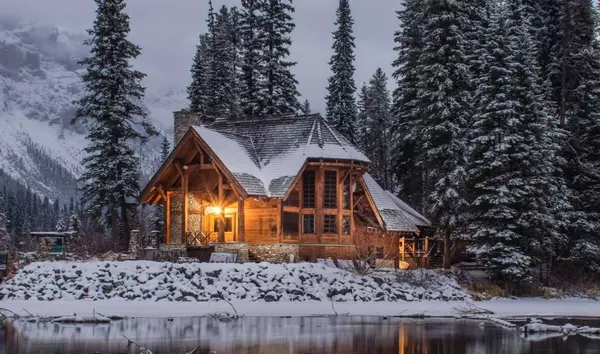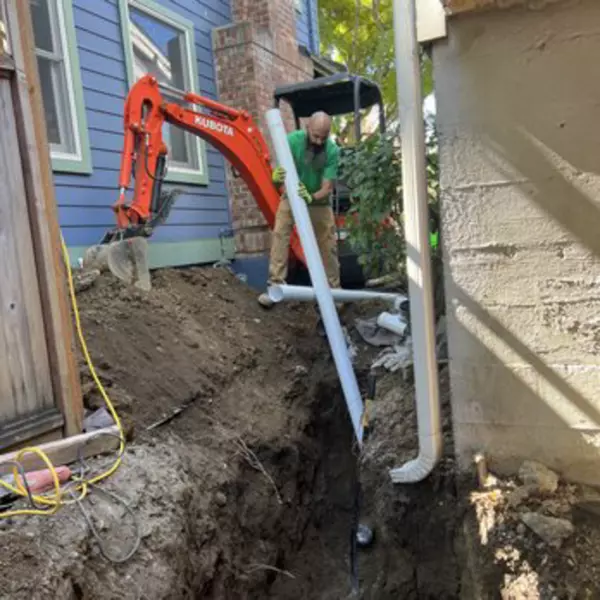
9 Bedroom Design Mistakes You’re Making (And How to Fix Them for Better Sleep)
Growing up in Hawaii, Feng Shui was an integral part of my life. My childhood bedroom had a Japanese-inspired design, complete with shoji doors that exuded simplicity and balance. Those early lessons taught me how our environment can shape our energy and well-being. Drawing from those experiences, I’ve compiled tips to help you create a harmonious bedroom that supports restful sleep and positive energy. After all, I think most of us just want a good nights sleep so we are ready for the next day. 1. Poor Bed Placement: The #1 Sleep Disruptor Where your bed is placed can affect how restful and secure your sleep feels. One of the first principles I learned was about the commanding position—placing the bed so you can see the door without being directly in its path. This not only promotes a sense of safety, but also ensures a balanced energy flow. Tips for Better Bed Placement: Keep at least 2 feet of space on either side of the bed for easy access. Avoid placing your bed under a window to minimize drafts and distractions. Ensure your headboard is against a solid wall for stability, both physically and energetically. 2. Mirrors in the Bedroom: Friend or Foe? Mirrors can amplify energy, which isn’t always ideal for a restful space. In my childhood home, mirrors were carefully placed to reflect natural beauty, but never in ways that disrupted the flow of energy. If you are wondering if your mirror in your bedrooms is in the right place, try covering the bedroom mirror for a couple nights and notice if your sleep improves. If you sleep soundly with them covered, consider replacing them or moving them to a wall that's not facing your bed. How to Use Mirrors Strategically: Place mirrors to reflect peaceful artwork or calming scenery. Avoid mirrors that face the bed or door directly, as they can create unnecessary stimulation. If you need a full-length mirror, position it inside a well-organized closet. 3. Lack of Blackout Curtains and Proper Lighting When we first moved into our current house, one of my favorite things about our bedroom was the view. With trees behind us, waking up to the natural scenery felt like the perfect way to start the day. To make the most of it, we hung sheer curtains to let in soft, natural light each morning. Fast forward a 10 years, and it was time to refresh the space. I updated the bedroom with a new paint color and realized the sheer curtains had seen better days—they were falling apart! As I searched for replacements, I stumbled upon a set of blackout curtains that I instantly loved for their sleek look. Once I hung them, I realized they were more than just a stylish addition; they completely transformed our bedroom. Blackout curtains or shades are a game-changer. They effectively block out light pollution, creating a dark, serene environment that helps regulate your circadian rhythm and improve your sleep quality. If you’re curious about light pollution and its effects, feel free to check out my earlier blog post on the topic. Whether you’re looking for better sleep or a cozy upgrade to your bedroom, blackout curtains might be just the solution you’ve been searching for! Lighting Tips: Invest in blackout curtains for a darker, more restful environment. Use warm lighting (2,700-3,000K) to create a cozy glow. Smart lighting systems, like Philips Hue, can mimic natural transitions from day to night. 4. Hanging the Wrong Artwork The artwork in your bedroom should evoke peace and positivity. Growing up with minimalist, Japanese-inspired decor, I learned to choose visuals that promote calm rather than chaos. Pro Tip: To create a relaxing atmosphere, choose artwork that promotes peace. Avoid harsh themes or somber figures, and instead, opt for serene landscapes or soft, abstract pieces in muted tones. A friend of mine, who also grew up in Hawaii, adorned her new bedroom with pictures of local flowers from her childhood garden. These images do more than just add beauty to her space—they bring back the scent and cherished memories of those blossoms, creating a deeply comforting and sensory connection. Let your artwork inspire calm and joy while making your space truly personal. 5. Letting Clutter Take Over I don’t know what it is about clean clothes—they seem to have a mind of their own! One minute they’re folded in the basket, and the next, they’re scattered on the floor, before I even have a chance to blink. Does that happen to you too? I’ve found that keeping my room organized—starting with a made bed and clothes neatly put away—makes a huge difference. Every time I walk into a tidy space, I feel a little less stress, like a small weight has been lifted. It’s amazing how a simple habit like this can create a sense of calm. Our environment plays a big role in our well-being. When your bedroom is clutter-free, it’s not just easier on the eyes; it improves the room's energy and helps you feel more at peace. So, maybe those rebellious clothes deserve a little extra attention—they might just hold the secret to a more relaxing space. Decluttering Hacks: Store only neutral items, like linens or seasonal clothing, under the bed. Regularly purge items you no longer use or love. Incorporate functional storage to keep surfaces clear. 6. Keep your colors neutral In Hawaiian culture, vibrant colors are a hallmark of our islands and home decor. However, when it comes to the bedroom, we lean into nature-inspired tones to create a tranquil retreat. Soft earth tones, muted blues, greens, the gentle shades of the ocean and sky help foster relaxation. Even luxury hotels use muted colors like browns, grays, and creams to promote calm and comfort—an approach you can easily adopt in your own space. Color Palette Tips: Stick to soft blues, greens, or warm neutrals. Avoid bold, vibrant colors that may overstimulate the mind. A serene color palette can transform your bedroom into a peaceful haven for rest and rejuvenation. 7. Too Much Technology Okay, I’ll admit it—until recently, my nightly ritual included scrolling through Facebook or Instagram right before bed. Yes, I know screens emit blue light and mess with sleep cycles, and yes, I’ve read all about how a tech-free zone is vital for better rest. But somehow, my phone and I are still in a complicated, pre-sleep relationship. If you’ve already banished your devices from the bedroom, I’m genuinely thrilled for you (and only a little jealous). I even spoke to a sleep specialist, and he confirmed what we all know deep down: ditching the phone and TV from your bedroom will work wonders for your sleep. Maybe 2025 will be the year I finally kick my phone out of bed. For now, I’m just aiming to keep it on silent—baby steps, right? Tech-Free Bedroom Tips: Keep electronics, like TVs and laptops, out of sight. Unplug devices at least an hour before bedtime to wind down naturally. If you work in your bedroom, create clear boundaries between work and rest areas. 8. Unbalanced Furniture Layout In my Japanese-inspired bedroom, balance was everything. Symmetry and harmony in the furniture layout not only create a calming atmosphere but also prevent you from turning your room into an unintentional obstacle course. Even if your bedroom isn’t spacious, there are ways to make it feel open and peaceful. Quick Fixes for a Balanced Bedroom: Add matching nightstands or lamps for a sense of symmetry—it’s a small detail that makes a big impact. Mix textures: Pair a plush rug and cozy bedding with sleek, minimalist furniture to keep the space visually interesting without feeling cluttered. No matter your room's size, these small adjustments can create a sense of calm and flow that makes your bedroom a place of true relaxation. And hey, fewer bruised shins are always a bonus! 9. Storing the Wrong Items Under the Bed Stashing souvenirs, photos, or out-of-season clothes under your bed might seem practical, but Feng Shui suggests otherwise. These emotionally charged items can disrupt the energy flow, symbolizing the past and leaving you feeling stuck. Keep it simple: only neutral items like extra bedding went under the bed. Whether it was good Feng Shui or just avoiding horror-movie vibes, the rule was clear—keep it clutter-free. Safe Under-Bed Storage Tips: Stick to linens or seasonal clothing. Avoid memorabilia or emotional items that could weigh down your space. A little decluttering can go a long way in creating a more peaceful, restful bedroom! Transform Your Bedroom for Restful Nights The principles of Feng Shui taught me that our spaces have a profound impact on our well-being. By addressing these common bedroom mistakes and incorporating these tips, you can create a sanctuary that supports relaxation and rejuvenation. Have you tried any of these tips? Share your thoughts or tag someone who needs to read this! 🌙 #BetterSleep #BedroomDesign #FengShuiTips #DeclutterYourSpace 💡 Curious about more homeownership tips? Follow us at Rethinking Real Estate for insights and advice that keeps you informed! We have more blog posts at https://rethinkingre.com/blog or go to our youtube channel at https://youtube.com/@rethinkingre

15 Fun & Clever Winterizing Tips to Keep Your Home Warm, Safe, and Efficient All Season,
Winter is coming, and whether you’re a homeowner protecting your investment, a homebuyer preparing to move in, or a home seller trying to attract buyers, winterizing your home is essential. Not only will these steps keep your home cozy, they’ll also save money, prevent costly repairs, and make your property more appealing to buyers. Ready to winter-proof your space? Let’s dive in with these 15 fun, effective tips! 1. Service Your Furnace for Energy Efficiency You furnace is going to be working full time now. A well-maintained furnace is a huge selling point for buyers and a must for owners. Schedule an HVAC professional to tune it up and replace filters. Highlight this in your real estate listing as having been done. This will show you are on top of your maintennace program. 2. Reverse Ceiling Fan Direction for Better Heating Don't forget to do this one! Flip the switch on your ceiling fans to rotate clockwise in winter, pushing warm air down this will help you on your heating costs. It’s a small, budget-friendly tip with big comfort payoffs. 3. Insulate Your Attic to Prevent Ice Dams Ice dams can cause roof damage, a red flag for buyers and a headache for owners. Proper insulation and ventilation in your attic protect your roof and improve energy efficiency—key for resale value. 4. Inspect the Roof for Potential Problems After our most recent storm I mentioned getting up to see what your roof looked like, so here is one more reminder. Loose shingles, cracks, and leaks scare off potential buyers. It is also one of the first things an inspector looks at. Mention any updates in your real estate marketing as a "winter-ready home improvement. 5. Seal Windows and Doors to Block Drafts Homeowners can save up to 30% on heating by sealing drafts.There are several ways to seal windows, including caulking, using foam tape, weatherstripping, and even installing window shades will help reduce heating costs. Buyers and sellers love hearing about reduced energy costs. 6. Clean Gutters to Protect Your Foundation I never truly understood the importance of clean gutters until I became a real estate agent. Seeing the damage caused by pooled water—rotted fascia boards, soggy siding, and even foundation issues—was eye-opening. Clogged gutters trap water, which can seep into vulnerable areas like fascia boards and soffits, leading to costly repairs. For sellers, dirty gutters can signal neglect to buyers. A quick cleaning keeps water flowing, protects your home, and ensures a great impression during showings. Add this simple task to your pre-sale maintenance checklist! 7. Check Exterior Drainage to Prevent Water Issues Standing water near your foundation can cause flooding, a big concern for buyers. Adjust the slope of your yard if needed and mention this proactive maintenance in showings or home tours. If you have put a french drain in or done other drainage mitiagation updates let the buyerr know so they don't have to worry about that. 8. Winter-Proof Outdoor Faucets Frozen pipes are a nightmare for any homeowner. Disconnect hoses, drain outdoor faucets, and shut off their water supply. This one is easy, in fact i just had to do this yesterday on our house. Make sure you actually use the strap in the inside of the cover to loop it to the faucet so if you have winds it doesn't blow off. 9. Winterize Your Sprinkler System Buyers with lawns and gardens appreciate a well-maintained sprinkler system. Drain the lines and insulate outdoor connections to avoid winter damage. 10. Test Smoke and Carbon Monoxide Detectors With homes sealed up tight in the winter, the risk of carbon monoxide exposure and fire incidents increases. Test all smoke and carbon monoxide detectors to ensure they’re working properly, and replace batteries as needed. Inspectors and Appraisers will look to see if you have smoke and carbon monoxide detectors so stay ahead and make sure they are in working order. 11. Store Lawn Equipment for Long-Term Care Clean and store mowers, garden tools, and patio furniture. Buyers see these small details as signs of a well-maintained home, making your property more attractive. 12. Prune Trees and Shrubs at the Right Time I am famous with my neighbors of pruning at the wrong time since I have been in real estate, so learn from me, :) Delayed pruning in late winter protects plants from frost damage. A nicely prined yard alos let's buyer's know that the maintenance on the outside of the house isn't a huge chore because it is already done. 13. Test and Showcase Your Sump Pump If you have a sump pump, a functional sump pump is a great selling point in areas prone to storms. Test it by pouring water into the pit to ensure it’s ready for winter. Mention this feature in listings to ease buyer concerns about flooding. 14. Clean and Inspect the Chimney for Safe Fires I know this is not a sexy topic but If you have a fireplace, buyers will love knowing it’s been professionally cleaned and inspected. It’s both a safety measure and a selling point, especially for cozy winter showings. 15. Add Insulated Curtains or Window Film for Extra Warmth Windows are a common source of heat loss, even with good seals. For a quick and stylish fix, install insulated curtains or apply window film. Both options help keep the cold out and the heat in, making your home more energy-efficient and cozy. We keep our curtains closed during the day in our primary bedroom since we are ot using it during that time and it makes a huge difference to our heating bill. Why Winterizing Matters for Buyers, Sellers, and Owners For homeowners, keep in mind that during the winter months there are less buyers out and weather can retrict showing on homes. Not only does winterizing reduces energy bills and prevents costly damage, it’s a way to market your home as move-in ready, appealing to buyers looking for a low-maintenance property. And for buyers, these tips ensure your new home is comfortable and efficient from day one. Share the Warmth: Winterizing Your Home Can Boost Value Winterizing is more than just a seasonal chore—it’s a smart investment in your home’s comfort, safety, and resale value. Whether you’re selling, buying, or staying put, these steps make a big impact. Take action today, and enjoy a cozy, stress-free winter! 💡 Curious about more homeownership tips? Follow us at Rethinking Real Estate for insights and advice that keeps you informed! We have more blog posts at https://rethinkingre.com/blog or go to our youtube channel at https://youtube.com/@rethinkingre

Shared Side Sewers: What Every Seattle, King County and Pierce County Homebuyer Needs to Know
When buying a home in Seattle, King County, or Pierce County, there’s one underground feature that deserves your attention: the side sewer. For many properties, particularly in older neighborhoods, side sewers are shared systems connecting multiple homes to the main sewer line. Known as “party sewers” or “common side sewers,” these shared connections come with some unique responsibilities—and risks—for homeowners. Here’s what you need to know to navigate this crucial aspect of homeownership. The Lowdown on Side Sewers: A Shared System In King and Pierce County, side sewers are frequently shared among neighboring properties, meaning that multiple homes often connect to the municipal sewer through a single line. At some point, these individual pipes join into one shared lateral line that carries waste to the main municipal system. This can be incredibly efficient, but it also requires coordination and cooperation among homeowners. Real-Life Example: Helping Our Client Understand Their Shared Side Sewer Recently, we had a client who purchased a home in Seattle. The paperwork revealed that their property had a side sewer, so we contacted the Seattle Development Office to learn more. With their help, we obtained a property map showing the exact path of the sewer line and the shared connection point with a neighboring property. This clarified which parts of the line were the homeowner’s responsibility and which sections were shared with their neighbor. Our client asked an important question: Who actually maintains these sewer lines? The answer is a bit complex. In many cases, homeowners are responsible for the portion on their property and any shared sections leading to the main sewer line, while the municipality maintains only the public part of the system. The complex part is finding out what your city will cover. Some will only cover right at the main hook up, other cities will cover to the property line. Key Risks and Responsibilities of Shared Side Sewers Owning a home with a shared side sewer has unique considerations. Here are some of the main factors for buyers to be aware of: Shared Responsibility and Costs: If a blockage or damage occurs on the shared section of the line, all connected homeowners must pitch in for repairs. This shared responsibility means homeowners need to work together to address issues, which can delay repairs and increase costs. Maintenance Coordination: With shared side sewers, any repair or maintenance often requires approval from all parties involved. This coordination can be challenging, especially if one homeowner is uncooperative or unaware of their responsibilities. Root Intrusion and Aging Pipes: Older side sewers, many of which are made from clay or concrete, are susceptible to damage from tree roots or general wear over time. Since the costs of repairs are shared, unexpected damage can lead to high expenses that buyers should be prepared for. Legal Considerations: Since side sewers often cross property lines, repairs and maintenance on shared sewers can raise legal questions, particularly regarding access to parts of the line on a neighbor’s property. Knowing the layout of the sewer system and consulting a property map can help clarify these boundaries. What Homebuyers in King and Pierce Counties Should Do For prospective buyers in Seattle, Tacoma, and the surrounding areas, here are some essential steps to take if you’re considering a property with a shared side sewer: Verify the Sewer Layout: Contact the city or county development office to obtain a property map or sewer diagram. This can reveal whether the property has a shared sewer and where the shared line is located. Understand Maintenance Responsibilities: Ask about the boundaries of responsibility between you, your neighbors, and the city. This can clarify who is responsible for what and prevent unexpected surprises if repairs are needed. Invest in a Sewer Inspection: Side sewers aren’t typically included in standard home inspections, so it’s worth hiring a specialized sewer inspector. This additional inspection can reveal any existing issues with the line. Budget for Potential Costs: Shared sewer lines in older neighborhoods may need maintenance or repairs, so it’s wise to be financially prepared for unexpected expenses. Key Takeaway Side sewers are a hidden, yet essential, part of homeownership in King and Pierce counties, especially in older neighborhoods. Knowing whether a property has a shared side sewer and understanding its responsibilities can save you time, money, and hassle. If you’re buying a home with a side sewer, reach out to local offices to confirm the layout, invest in an inspection, and be prepared for cooperative maintenance with neighbors. With a little preparation, you can avoid surprises and enjoy your new home with confidence. For more insights and help navigating these unique property features, we’re here to guide you every step of the way! 💡 Curious about more homeownership tips? Follow us at Rethinking Real Estate for insights and advice that keeps you informed! We have more blog posts at https://rethinkingre.com/blog or go to our youtube channel at https://youtube.com/@rethinkingre
Categories
Recent Posts










